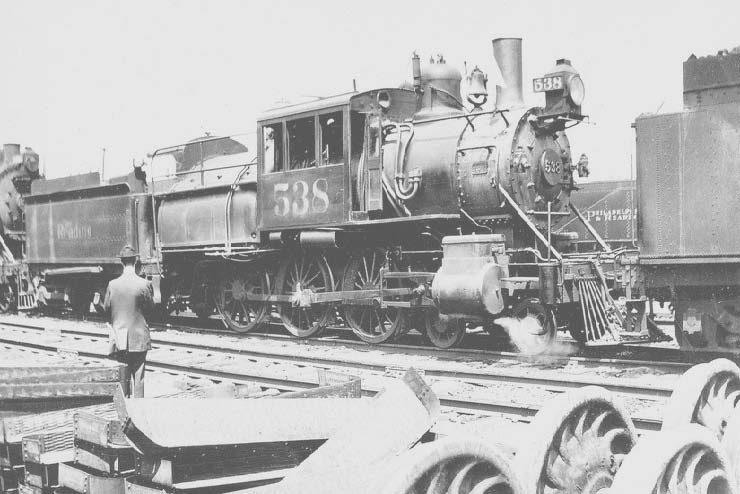The Railroad as it Shaped Our Town
Prior to the arrival of the railroad, our area was mostly farmland. There were clusters of houses and some trades and businesses which supported farming here and there, but by and large the region was a quiet home to hardworking, religious people to whom God and family were the focus. With the arrival of train transportation, the farmers had easier access to the Philadelphia markets, while industry used the railroad to receive raw goods and carry away finished products. Life moved to a new and faster beat.

The Railroad in Telford
Before the arrival of the railroad to Telford, this area was originally called ‘Hendrick’s Blacksmith Shop’ for the owner and shop that was located near the railroad. Later when the “turnpike” was created, the name was changed to ‘County Line’ after the road. With the opening of the Bethlehem branch of the Reading Railroad on January 1, 1857, ‘County Line’ also added the County Line Hotel built by Jacob N. Souder. Ten years later, ‘County Line’ had a train and station, a hotel, and a new name as well. The Railroad called its stop here Telford and eventually the name was accepted for the incorporated town as well.
Before the arrival of the railroad to Telford, this area was originally called ‘Hendrick’s Blacksmith Shop’ for the owner and shop that was located near the railroad. Later when the “turnpike” was created, the name was changed to ‘County Line’ after the road. With the opening of the Bethlehem branch of the Reading Railroad on January 1, 1857, ‘County Line’ also added the County Line Hotel built by Jacob N. Souder. Ten years later, ‘County Line’ had a train and station, a hotel, and a new name as well. The Railroad called its stop here Telford and eventually the name was accepted for the incorporated town as well.
The first trains ran from Lansdale to Bethlehem in 1857 and as stated above, the railroad was responsible for the growth of Lansdale, Hatfield, Souderton, Telford, Sellersville, and Perkasie, which were situated along its route. By 1886 one could find in Telford such businesses as: mills, general stores, coal and lime yards, hardware stores, boot and shoe makers, wheelwrights, cabinet making, steam planing and sash factory, feed stores, tinsmiths, agricultural machine shop, clothing manufacturing, watchmaker and jeweler, physician, and bakery.
For a closer look at rail travel from a passenger’s perspective during these early years, read these words written in a letter to a friend: “If you could stop when you wanted to, if you were not shut up in a box with a lot of tobacco smokers, if the engine and fire did not burn holes in your clothes, if the springs and hinges did not make such a racket, if the smell of the oil and smoke did not poison you, if you were not in danger of being blown sky high or kicked off the rails, then this new mode of travel would not be so bad.”
As exciting as this new mode of transportation was and the new opportunities it brought with it, tragedy followed as well. On May 28, 1903 hot coal sparks from a passing train fell on the roof of Moses R. Shelly’s Mill situated next to the tracks. When the fire was finished the Shelly feed store, grinding mill, cider press, coal yard, hay press and lumber yard were gone. Also destroyed were four private houses, the railroad station, wheelwright and blacksmith shops, and hotel sheds and stables.
By the beginning of the new century, Telford was the largest milk shipping town along the line. The “Milk Train” would arrive at 6:30am each morning to take fresh milk to Philadelphia. With the advent of automobiles, tank trucks went directly to each farm to collect the milk and transport it to Philadelphia. This led to the eventual demise of the Milk Train.
As the train changed our world by making travel quicker, so the automobile changed our world by making us more independent and little Telford was a part of many of these innovations as they happened.
